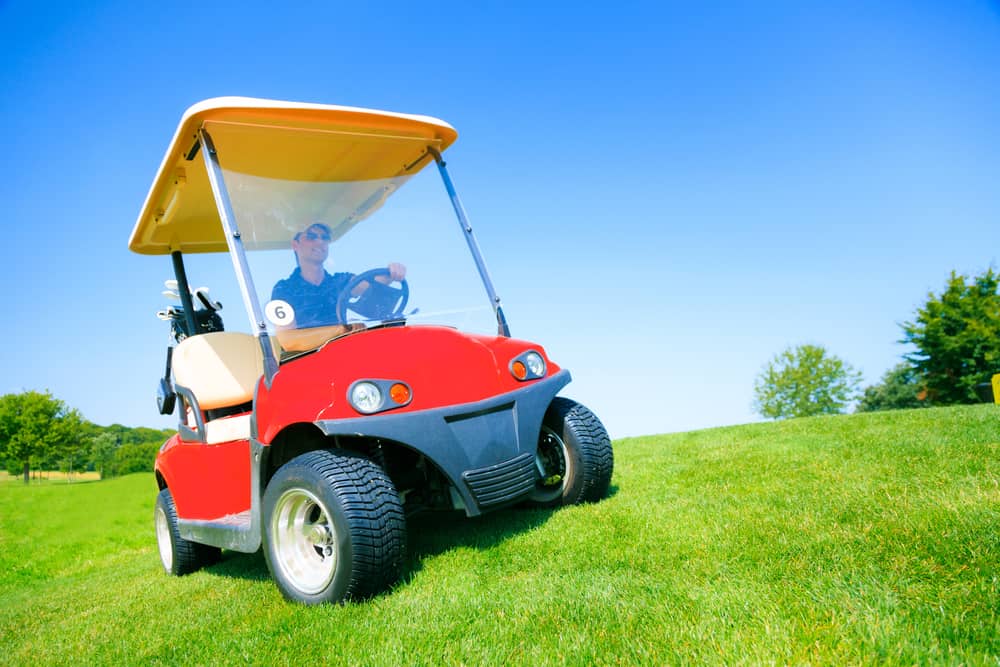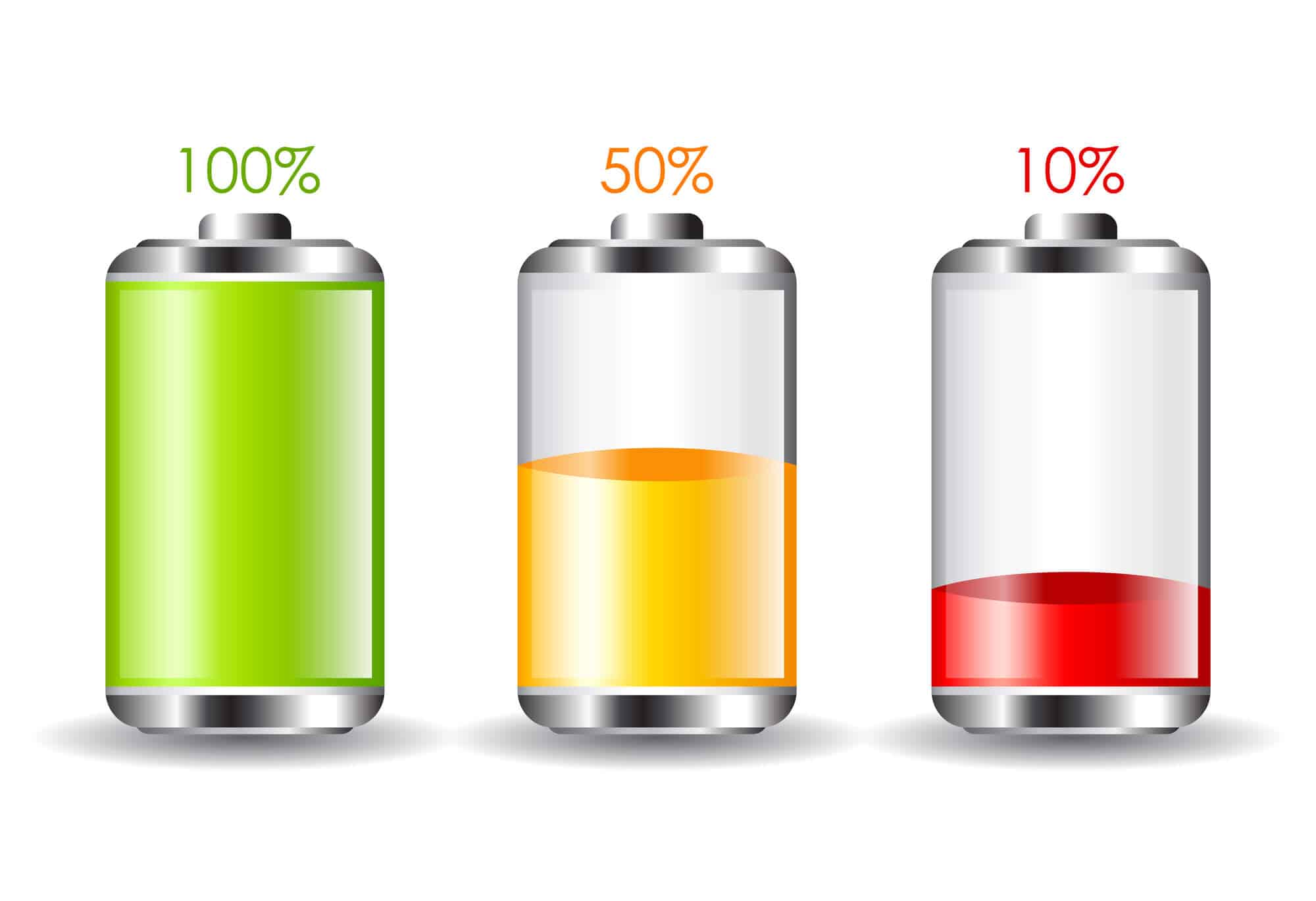
Golf cart owners often like tweaking the look of their vehicle in a variety of ways, making it suit their exact needs.
For example, some people may want to lower their golf cart to bring the wheels closer to the ground and enhance their overall ride.
This process is something that you may be able to do as a cart owner, though it is a bit more advanced than other types of DIY processes.
The steps below should help to make it easier for you to lower your golf cart in a way that makes sense for your needs.
Note: The steps here are based on E-Z-GO golf carts, but they can be pretty easily adapted to other models with just a few tweaks in your approach.
How to Lower a Golf Cart

The process of lowering a golf cart is one that must be carefully understood and prepared for because it includes a myriad of different steps.
The overall steps you’ll have to take here include putting your cart on a hydraulic lift, removing the tires, carefully taking off the front axles, installing new tie rods, and then repeating these steps in reverse.
You’re also going to need a handful of different items that will help in this installation process, such as leaf spring plates, a lower block, a drop axle weldment, and the lowering hardware.
We have broken down the steps below in a smooth and streamlined manner, which should help to make it easier for you to execute them without running into any issues.
Step One: Lift the Cart Smoothly
Place your golf cart on a hydraulic lift and put it as high up as you can, while still making it easy to access for working.
You cannot just jack up your golf cart because you’re going to need pretty open access to its bottom and need more streamlined help.
Try to find someone who has this type of jack or purchase one for this purpose, as you can always utilize the jack for other repairs.
Most of the time, it is usually quite easy to find a cart-based hydraulic lift from a cart manufacturer, but you should be prepared to spend money.
In some ways, it may make more sense for you to instead find a car repair shop that already has a hydraulic lift and that will let you work on your cart.
Some areas may have unique “self-repair” booths that you can rent to access many types of repair equipment options.
Step Two: Remove the Tires and Axles
Remove the lug nuts holding your tires in place on your cart—adjusting the connector as needed to suit the size—and place them in a storage container.
You can use a manual wrench for this purpose or a hydraulic one to increase your speed—we suggest the latter option if it is available.
Carefully remove each of your tires after you have removed the lug nuts and place them to the side of your cart, making sure to position them for easier access later.
Identify your front axles and find the connecting elements holding them in place—usually a handful of bolts and nuts.
Remove the axle and lower it to the ground, positioning it in front of your cart for easier access later when you are done with the rest of the steps below.
Step Three: Lowering the Cart
Carefully remove the old tie rods from your cart and insert the new ones—you should have new locknuts that you can screw into place to keep them locked.
Remove the support plate just beneath your leaf springs and position the new spring plate into place, focusing on one at a time to minimize any errors that you may make.
Once you have your new plate in place, you can add the lowering block into position to change up how high your golf cart is likely to run while on the road.
Carefully put your axle back into place, using the same nuts and connectors to attach it properly to your cart without any issue.
Place your tires back into place on your cart and use your lug wrench to tighten them back up in the order suggested by your cart manual.
Lower your cart and ride it briefly to see how well it runs—if you find that it is too low to the ground, you may need a one-inch lowering kit, rather than a two-inch option.
Why People Lower Golf Carts — An In-Depth Examination

Now that you understand how to lower a golf cart, it is a good idea to understand why a person would want to lower their golf cart in the first place.
There are a handful of benefits that you can get from this process that will enhance the operation of your golf cart.
That said, many disadvantages also exist for lowering a golf cart, each of which must be carefully understood before you begin.
Let’s start with the benefits to give you an idea of what you will gain when you lower your golf cart in this way.
Then, we’ll move on to the disadvantages to make this information clearer and easier for you to weigh out properly.
By the time you are done reading this section, you should know whether or not lowering a golf cart is right for your needs.
If you go back to the top of the article and re-read our instructions, you’ll have a better grasp of the steps that you must take and will be able to lower your golf cart smoothly and efficiently.
Make sure that you check with the owner’s manual for your golf cart before you perform any of these steps to ensure that you perform them without causing any complications with your cart’s operation.
1. Benefits of Lowering Your Cart

The many advantages of lowering a golf cart make this a step that a growing number of people have taken over the years.
We researched a few of the most common reasons that people take this step and compiled them here to give you easy access.
These benefits include how lowering a cart:
- Improves Balance and Center of Gravity: Many cart owners lower their ride as a way of decreasing their risk of tipping it over. By lowering your cart and decreasing its center of gravity, you make it a more solid and consistent ride and decrease the top-heavy nature of some golf carts.
- Enhances Comfort and Access: Older golf cart owners often find it easier to get in and out of a lower cart because they are easier to slide into with minimal issues. This option is often a good choice for those in retirement communities who utilize carts for ease of transportation.
- Potentially Boosting Tire Grip: Some cart owners believe that lowering the golf cart closer to the ground causes the tires to flatten out slightly as it rides and improves their grip. This benefit is one that may need to be tested a bit more to verify its accuracy.
- Increases Style in Some Instances: A handful of cart owners may find that lowering their cart produces a more handsome look that fits their style needs. This benefit will vary depending on your personal tastes and any other elements that you may add to your cart.
- Simplifies Garage or Storage Access: If you have a small garage or a storage shed and you struggle to get your cart into it, lowering it may make this step easier. By adjusting your cart so that it is closer to the ground, you will decrease the amount of storage-shed clearance required for your cart.
- Boosts the Cart’s Aerodynamic Capabilities: There’s no doubt that lowering your golf cart improves its aerodynamics by decreasing the amount of wind drag it experiences. In this way, you can improve your cart’s efficiency and avoid serious strain and wear and tear on your cart.
If these benefits sound like they are worth the challenge of lowering your cart closer to the ground, you should go back to the beginning of this article and follow the steps we outlined above.
Before you take this step, though, we strongly suggest that you do read the downsides that you may experience after lowering your cart.
Though these disadvantages may be outweighed by the positives for many people, others may find that they are too inconvenient for their consideration.
As always, we strive to produce a fair and balanced understanding of these situations to make it easier for you to make carting decisions.
2. Disadvantages to Lowering Your Golf Cart

While we believe that lowering a golf cart is truly advantageous for the right person, we also understand that it might not be right for some people.
The downsides listed below are a few of the most common issues that people may run into when they lower their cart:
- Uneven Tire Wear: Like with standard automobiles, lowering your golf cart will flatten your tires slightly, expanding their surface and producing uneven wear and tear. The severity of this problem typically increases the more you lower your golf cart.
- Problems Beneath the Cart: Although this problem is typically more common if you drive in rough conditions and on uneven ground, lowering your golf cart does increase the chance that the bottom parts will scrape on the ground and end up getting damaged as you ride.
- Repair Issues: Lowering your golf cart may make it more difficult for you to repair your cart by complicating how easily you can jack up your cart. This issue doesn’t affect repair techniques or anything like that, though, so it may be easier for many owners to overcome.
- Uncomfortable Rides: Some people find that lowering their golf cart decreases the effectiveness of their shocks, producing a shakier ride. This problem is particularly noticeable if you ride over uneven ground or off of a paved path while you ride your cart.
- Unattractive Style: While it is true that many people love the look of a lowered golf cart, other individuals may find that they are disappointed with this look. Make sure that you are fully prepared for this change in look and comprehend how it will transform your cart’s appearance.
Weigh whether or not these downsides will be problematic for you or whether or not you can easily ignore them for the benefits of lowering your cart by one, one and one-half, or two inches.
It may be a good idea to talk to a carting professional, such as a technician or a dealer, to better understand what kind of advantages you may get from lowering your cart in this way.



Leave a Reply
You must be logged in to post a comment.